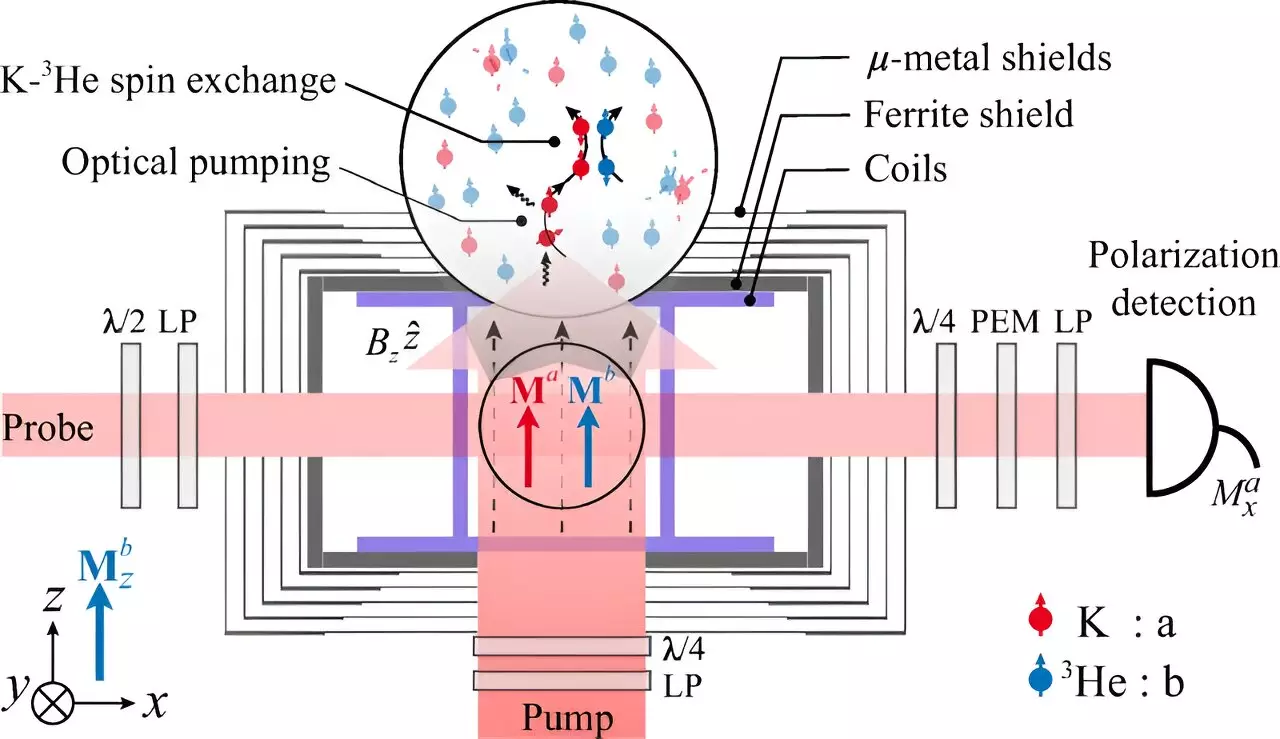In a remarkable advancement within the realm of precision measurement, a team of researchers led by Professor Peng Xinhua and Associate Professor Jiang Min from the University of Science and Technology of China (USTC) has unveiled a groundbreaking technique to mitigate magnetic noise interference. This innovative approach harnesses the Fano resonance interference effect acting between mixed atomic spins and has been documented in the respected journal Physical Review Letters. As ongoing research into exotic spin interactions continues to be at the forefront of particle physics, the implications of this study could reverberate across various scientific domains, particularly in understanding dark matter and the elusive fifth force.
Historically, the measurement of weak magnetic fields has posed a substantial challenge for researchers exploring exotic spin interactions. Notably, in experiments concerning exotic phenomena, these magnetic fields are often insidiously overshadowed by magnetic noise, which complicates the detection of minute signals that these studies aim to identify. Current atomic comagnetometers provide some relief by employing dual spins to counteract magnetic drift and fluctuations; however, their efficacy is predominantly confined to low-frequency magnetic noise (less than 1 Hz). This limitation presents a significant barrier to experimentation, preventing comprehensive exploration of the vast uncharted territory concerning exotic spin interactions.
To address these limitations, the USTC research team developed an innovative method that utilizes the self-compensation effects of magnetic noise. Their experimental framework is built around a combined system of potassium (K) and superfluid helium-3 (3He). Potassium atoms, polarized through laser techniques, effectively serve as a means to both read out and transfer polarization to the nuclear spins of helium. Significantly, the groundbreaking work showed that through spin-exchange collisions, the potassium system could induce a state of effective polarization in 3He.
This study departs from traditional methodologies by adjusting the angle between the detection direction and the external magnetic noise, thereby allowing researchers to effectively tune out higher-frequency interference. Recognizing that previous experiments utilized bias magnetic fields that were symmetrically opposing the equivalent field of helium atoms, the researchers allowed the nuclear spin of helium to adiabatically respond to low-frequency magnetic fluctuations. This new angle-based approach not only revitalizes understanding of magnetic noise suppression but also fixes a critical gap in existing experimental approaches.
Remarkable Achievements and Future Implications
The breakthroughs demonstrated in this study are particularly impressive, as they achieve an unprecedented suppression of magnetic noise from near direct current up to 200 Hz. Significantly, the magnitude of suppression has been quantified to exceed two orders, suggesting that the technique is robust and versatile across various frequencies. As the researchers ventured into discussing theoretical underpinnings, they provided a compelling rationale from the perspective of Fabry-Perot resonance interference cancellation. Such clarity sheds light on the experimental results, promoting further exploration into the relationship between frequency adjustments and noise suppression.
Moreover, if the current methodology surrounding magnetic detection sensitivity can be enhanced, potential applications could see researchers achieving an order of magnitude improvement in sensitivity to pseudomagnetic fields, reaching an impressive level of 0.1 fT/Hz^1/2 over a broader frequency spectrum. This marks a significant leap toward amplifying magnetic detection capabilities, which is pivotal for future explorations of dark matter, exotic spin interactions, and fundamental physics research.
The research emerging from USTC offers new hope and direction for scientists striving within the challenging fields of particle physics and precision measurement. By successfully addressing the nagging interference caused by magnetic noise, this work serves as a new cornerstone for further inquiry. As researchers build on these findings, the potential exists for substantial advances in understanding some of the universe’s most mysterious elements, ultimately unlocking new knowledge in both fundamental and applied sciences. With each exploration, we step closer to unraveling the enigmas of nature that continue to challenge our understanding, shaping a future where precision in measurement no longer remains constrained by noise.


Leave a Reply